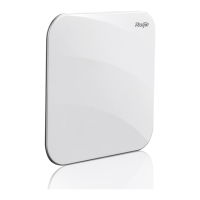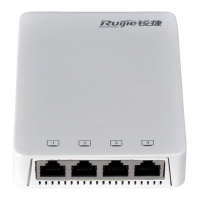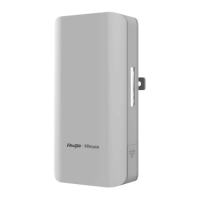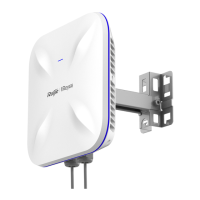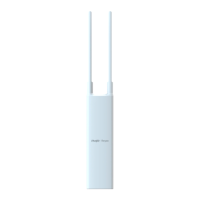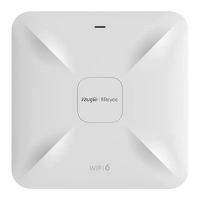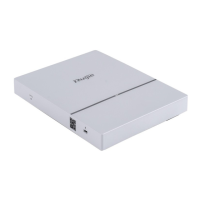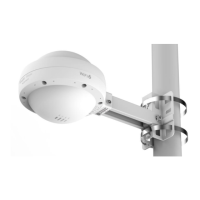Configuration Guide Configuring DHCPv6
If a host receives an RA message containing the O flag, it will enable the stateless service.
5.3.4 Relay Service
When the DHCPv6 client and DHCPv6 server are on different links, the DHCPv6 client can relay related messages to the
DHCPv6 server through the DHCPv6 relay agent. The DHCPv6 server also relays the response to the DHCPv6 client
through the relay agent.
Working Principle
When receiving a message from the DHCPv6 client, the DHCPv6 relay agent creates a Relay-forward message. This
message contains the original message from the DHCPv6 client and some options added by the relay agent. Then, the relay
agent sends the Relay-forward message to a specified DHCPv6 server or a specified multicast address FF05::1:3.
After receiving the Relay-forward message, the DHCPv6 server extracts the original message from the DHCPv6 client f for
processing. Then, the DHCPv6 server constructs a response to the original message, encapsulates the response in a
Relay-reply message, and then sends the Relay-reply message to the DHCPv6 relay agent.
After receiving the Relay-reply message, the DHCPv6 relay agent extracts the original message from the DHCPv6 server for
processing, and forwards the message to the DHCPv6 client.
Multi-level relay agents are allowed between the DHCPv6 client and DHCPv6 server.
DHCPv6 Relay Agent
Figure 5-13
The DHCPv6 relay agent performs message encapsulation and decapsulation between the DHCPv6 client and
DHCPv6 server to enable communication between the DHCPv6 client and DHCPv6 server on different links.
5.4 Configuration
Configuring the DHCPv6
Server
(Mandatory) It is used to create a configuration pool.
Configures a configuration pool for a DHCPv6
server.
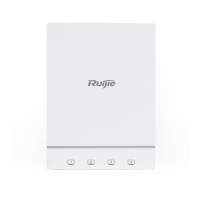
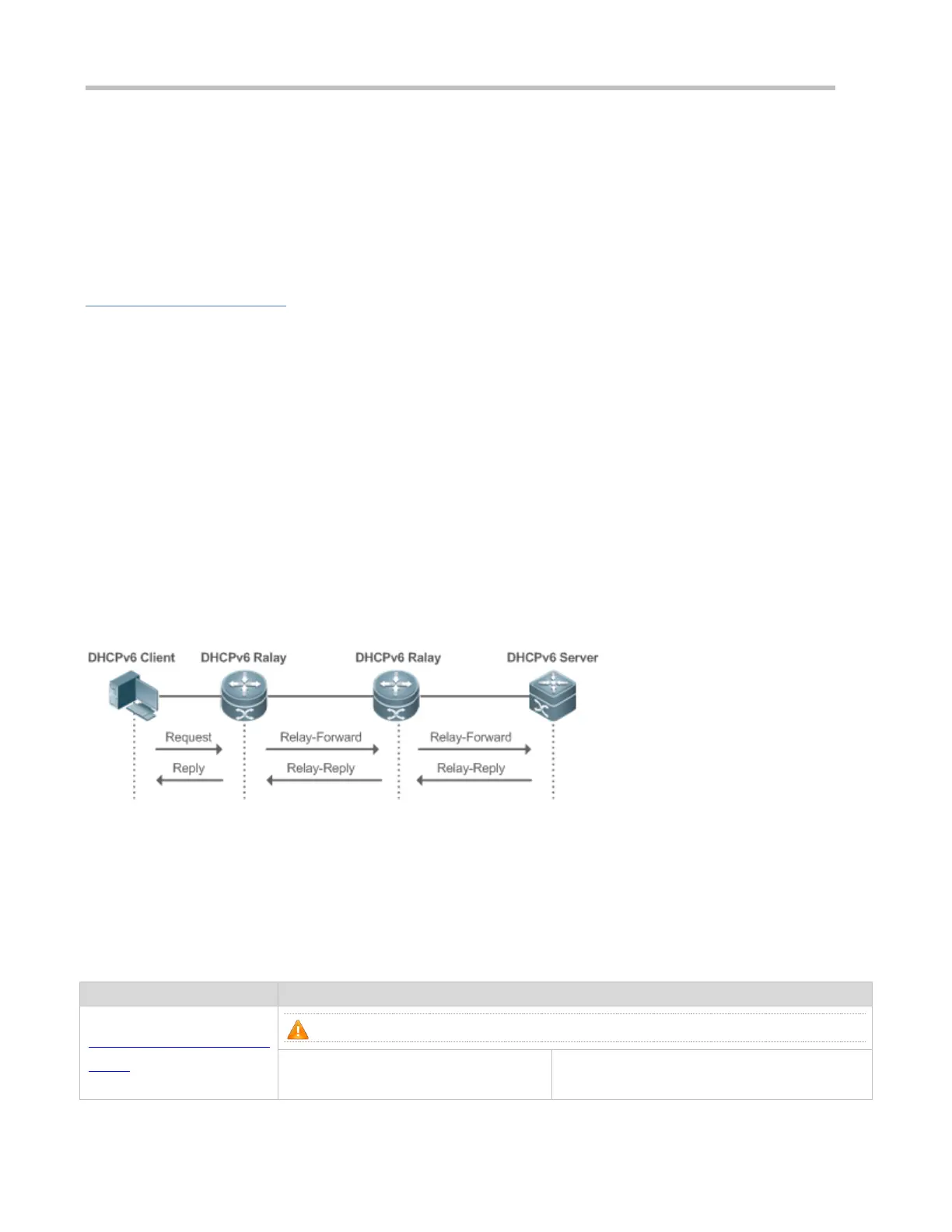